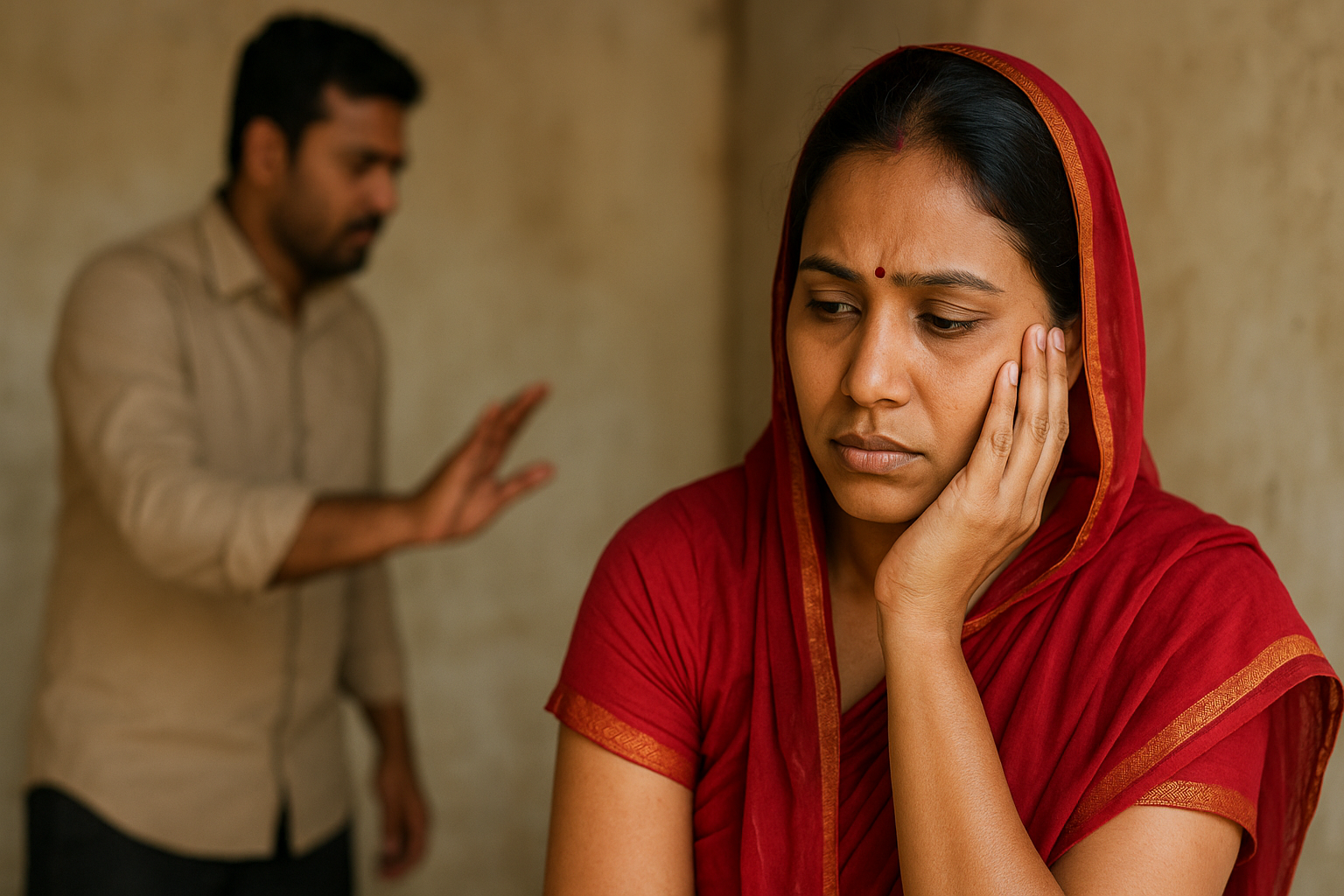Published On: 31st August, 2024
Authored By: Dhruv Shrivastava
Prestige Institute of Management and Research, Gwalior
Abstract
The doctrine of separation of powers is a fundamental principle that underpins the democratic framework of governance in India. Although the Indian Constitution does not explicitly enshrine this doctrine, it is implicitly woven into the fabric of the Constitution through various provisions and judicial interpretations. This article examines the concept of separation of powers in the Indian context, focusing on its historical evolution, theoretical foundations, and practical implications. The article begins by exploring the philosophical underpinnings of the separation of powers, drawing on the influential ideas of political theorists such as Montesquieu, who argued that liberty is best protected when governmental powers are divided among distinct branches. The Indian Constitution reflects this principle through a system that delineates the roles and responsibilities of the legislative, executive, and judicial branches, albeit with some overlaps and interdependencies. The legislative branch, represented by Parliament, is tasked with law-making, while the executive, led by the President and the Council of Ministers, is responsible for implementing these laws. The judiciary, independent in its functioning, interprets the law and ensures that both the legislature and executive operate within their constitutional limits. This article highlights the importance of checks and balances that arise from this separation, which serve to prevent the concentration of power and protect individual rights.
The article further discusses the challenges faced in maintaining a strict separation of powers in India, including instances of legislative encroachment on judicial functions and executive overreach. It underscores the necessity for a dynamic interpretation of the separation of powers, which allows for functional overlaps that enhance governance while preserving the core principles of democracy.
This comprehensive analysis aims to provide a deeper understanding of the separation of powers in the Indian Constitution, its significance, and the implications for democratic governance in India.
Introduction
The separation of powers is a doctrine that serves as a cornerstone of democratic governance. It ensures that the legislative, executive, and judicial branches of government operate independently and do not interfere with one another’s functions. This principle is vital for maintaining checks and balances within the government, thereby preventing the abuse of power. In India, the Constitution does not explicitly mention the separation of powers; however, it is an essential aspect of the constitutional framework. The framers of the Constitution were influenced by various political theories, particularly those of Montesquieu, who advocated for a clear division of governmental powers to safeguard liberty. This article aims to analyze the separation of powers as it exists in the Indian Constitution, examining its practical implications and the judicial interpretations that have emerged over time.
Background
The concept of separation of powers can be traced back to the writings of political philosophers like Montesquieu, who argued that liberty is best protected when governmental power is divided among different branches. The Indian Constitution, adopted in 1950, reflects this principle through various provisions that delineate the powers and functions of the legislature, executive, and judiciary. While the Constitution does not provide a rigid separation of powers, it establishes a framework wherein each branch has distinct responsibilities. Articles such as Article 50, which mandates the separation of the judiciary from the executive, and Articles 53 and 154, which vest executive powers in the President and Governors, respectively, indicate an understanding of the need for this separation.
The doctrine of separation of powers is a pivotal concept in democratic governance, aimed at preventing the concentration of power within a single entity and ensuring accountability among the branches of government. This principle has its roots in Enlightenment-era political philosophy, particularly articulated by thinkers like Montesquieu, who warned against the dangers of consolidating legislative, executive, and judicial powers within the same hands. Montesquieu’s assertion that “there can be no liberty… if the powers of judging are not separated from the legislative and executive” serves as a foundational idea that resonates throughout modern democratic systems.
In the context of India, the separation of powers is not explicitly enshrined in the Constitution but is implied through various articles and judicial interpretations. The framers of the Indian Constitution, influenced by both British parliamentary traditions and American constitutional principles, sought to create a flexible yet effective governance structure. They recognized the need for a system that would allow for the distinct functioning of the legislative, executive, and judicial branches while also accommodating the unique socio-political landscape of India. The Indian Constitution delineates the roles and responsibilities of each branch of government, thereby establishing a framework for their interrelationships. For instance, the legislative branch, represented by Parliament, holds the primary responsibility for law-making, while the executive, led by the President and the Council of Ministers, is tasked with implementing these laws. The judiciary, comprising the Supreme Court and various High Courts, serves as the guardian of the Constitution, interpreting laws and ensuring that both the legislature and executive operate within their constitutional limits.
Despite the absence of a rigid separation of powers, the Constitution provides for a system of checks and balances. Articles such as Article 50 mandate the separation of the judiciary from the executive, while Articles 121 and 211 prevent the discussion of judicial conduct in Parliament. These provisions highlight the intention to maintain the independence of the judiciary and prevent undue influence from the legislative and executive branches. The historical context of the separation of powers in India can be traced to the debates of the Constituent Assembly, where members discussed the merits and drawbacks of adopting a strict separation of powers akin to that of the United States. Ultimately, the assembly opted for a more flexible approach, recognizing the need for collaboration among the branches to address the complexities of governance in a diverse and populous nation.
Judicial interpretations have played a significant role in shaping the understanding of separation of powers in India. Landmark cases such as Ram Jawaya Kapur v. State of Punjab have underscored the importance of maintaining functional distinctions among the branches while acknowledging the necessity of interdependence. The Supreme Court has consistently emphasized that while the Constitution does not provide for an absolute separation of powers, it does delineate the functions of each branch, thereby creating an implicit framework for their operation.
Moreover, the evolving nature of governance in India has led to challenges in strictly adhering to the doctrine of separation of powers. The rise of administrative law, for instance, has blurred the lines between legislative and executive functions, as administrative agencies increasingly exercise quasi-legislative and quasi-judicial powers. This phenomenon raises questions about the effectiveness of the separation of powers in contemporary governance and highlights the need for a nuanced understanding of this doctrine in light of practical realities.
Legislative, Executive, and Judicial Powers
Legislative Powers
The legislative branch in India is primarily responsible for making laws. It consists of two houses: the Lok Sabha (House of the People) and the Rajya Sabha (Council of States). The Parliament has the authority to enact laws on various subjects enumerated in the Constitution, including the Concurrent List, which allows both the Parliament and state legislatures to legislate on shared subjects. The legislative process is characterized by checks and balances, where the executive must seek the Parliament’s approval for laws and budgets. Furthermore, the Parliament has the power to impeach the President and judges, thereby exercising oversight over the executive and judicial branches.
Executive Powers
The executive branch is headed by the President of India, who acts on the advice of the Council of Ministers, headed by the Prime Minister. The executive is responsible for implementing laws and administering the government. It also has the power to issue ordinances, which are temporary laws enacted when Parliament is not in session. The Constitution grants the executive certain powers, such as the ability to appoint judges and other officials, but it also places checks on these powers. For instance, the President’s actions are subject to judicial review, ensuring that executive decisions adhere to constitutional principles.
Judicial Powers
The judiciary in India is independent and has the authority to interpret the Constitution and laws. The Supreme Court and High Courts have the power of judicial review, which allows them to invalidate laws and executive actions that violate constitutional provisions. This power is crucial for maintaining the rule of law and protecting fundamental rights. The judiciary also plays a significant role in upholding the separation of powers by ensuring that the legislative and executive branches do not overstep their boundaries. Key cases, such as Kesavananda Bharati v. State of Kerala and Indira Gandhi v. Raj Narain, have reinforced the judiciary’s role as the guardian of the Constitution.
Judicial Interpretations and Landmark Cases
The Indian judiciary has played a pivotal role in interpreting the separation of powers. Several landmark judgments have shaped the understanding of this doctrine:
Ram Jawaya Kapur v. State of Punjab (1955)
In this case, the Supreme Court held that while the Constitution does not recognize the doctrine of separation of powers in its absolute form, it does provide for a differentiation of functions among the three branches of government. The court emphasized that each branch must operate within its designated sphere to maintain the integrity of the constitutional framework.
Kesavananda Bharati v. State of Kerala (1973)
This landmark case established the “basic structure” doctrine, asserting that certain fundamental features of the Constitution, including the separation of powers, cannot be altered by parliamentary amendments. The Supreme Court ruled that while Parliament has wide powers to amend the Constitution, it cannot change the basic structure, thereby reinforcing the importance of checks and balances.
Indira Gandhi v. Raj Narain (1975)
In this case, the Supreme Court invalidated the 39th Amendment, which sought to insulate certain elections from judicial scrutiny. The court ruled that the amendment violated the basic structure of the Constitution, including the principle of separation of powers. This judgment underscored the judiciary’s role in checking legislative power.
Implications of Separation of Powers
The implications of the separation of powers doctrine in the Indian Constitution are profound and multifaceted, influencing the functioning of government, the protection of individual rights, and the overall health of democracy in the country. This doctrine serves as a foundational principle that ensures a system of checks and balances among the legislative, executive, and judicial branches, thereby safeguarding against the abuse of power and promoting accountability.
Safeguarding Democracy
One of the most significant implications of the separation of powers is its role in safeguarding democracy. By distributing governmental powers among different branches, the doctrine prevents any single entity from monopolizing authority. This division is crucial in a diverse and pluralistic society like India, where various interests and groups must be represented in governance. The legislative branch, responsible for enacting laws, reflects the will of the people through elected representatives. The executive branch, accountable for implementing these laws, operates under the oversight of the legislature. Meanwhile, the judiciary serves as a check on both the legislative and executive branches, ensuring that their actions comply with constitutional mandates. This interplay fosters a democratic environment where power is not only decentralized but also subject to scrutiny and accountability.
Preventing Concentration of Power
The separation of powers is essential in preventing the concentration of power, a fundamental concern in any democratic system. Concentrated power can lead to authoritarianism, where a single branch or individual can impose their will without checks. The Indian Constitution, through its design, aims to mitigate this risk by ensuring that each branch has defined powers and responsibilities. For example, the legislative branch has the authority to create laws, but it cannot enforce them without the executive’s involvement. Conversely, the executive cannot unilaterally create laws or amend existing ones. This division is further reinforced by the judiciary’s power to review legislative and executive actions, ensuring that they do not exceed their constitutional limits. The landmark case of Kesavananda Bharati v. State of Kerala exemplifies this principle, where the Supreme Court held that the basic structure of the Constitution, including the separation of powers, cannot be altered by parliamentary amendments.
Protecting Individual Liberties
Another critical implication of the separation of powers is the protection of individual liberties. The judiciary plays a vital role in safeguarding fundamental rights enshrined in the Constitution by acting as a guardian against potential overreach by the other branches. Through judicial review, the courts can invalidate laws or executive actions that violate constitutional rights, thereby providing a mechanism for individuals to seek redress against state actions. For instance, in the case of Maneka Gandhi v. Union of India, the Supreme Court expanded the interpretation of Article 21 (Right to Life and Personal Liberty) to include the right to a fair procedure, thereby reinforcing the judiciary’s role in protecting individual liberties. This case illustrates how the separation of powers empowers the judiciary to act as a bulwark against potential encroachments on personal freedoms by the legislature or executive.
Challenges in Implementation
Despite its theoretical underpinnings, the practical application of the separation of powers in India faces several challenges. One significant issue is the tendency for executive overreach, where the executive branch may attempt to encroach upon the functions of the legislature or judiciary. This is often seen in the form of executive orders or ordinances that bypass parliamentary scrutiny, raising concerns about accountability and transparency. Furthermore, the weakening of legislative scrutiny has been a growing concern in recent years. The increasing reliance on executive actions, such as ordinances, can undermine the legislative process and diminish the role of elected representatives in governance. This trend poses a threat to the principle of representative democracy, as it reduces the opportunities for public debate and deliberation on important issues. Judicial independence is also a critical aspect of maintaining the separation of powers. However, there have been instances where the independence of the judiciary has been questioned, particularly in cases involving judicial appointments and transfers. The National Judicial Appointments Commission (NJAC) case highlighted the delicate balance between the executive’s role in judicial appointments and the judiciary’s need for independence. The Supreme Court ultimately struck down the NJAC as unconstitutional, reaffirming the judiciary’s autonomy in this regard.
The Role of Judicial Review
Judicial review is a cornerstone of the separation of powers in India, enabling the judiciary to assess the constitutionality of legislative and executive actions. This power is vital for maintaining the rule of law and ensuring that all branches of government operate within their defined limits. The judiciary’s ability to review laws and executive orders serves as a check on potential abuses of power, reinforcing the accountability of the legislature and executive. The significance of judicial review is evident in cases where the Supreme Court has intervened to protect fundamental rights or uphold constitutional principles. For instance, in the Vishaka v. State of Rajasthan case, the Supreme Court laid down guidelines to prevent sexual harassment at the workplace, demonstrating the judiciary’s proactive role in addressing societal issues and protecting individual rights.
Conclusion
The separation of powers is a vital aspect of the Indian Constitution that underpins the demoratic framework of the country. While not explicitly defined, the doctrine is implicit in various constitutional provisions and has been reinforced through judicial interpretations. The judiciary plays a crucial role in maintaining this balance, ensuring that the legislative and executive branches operate within their respective domains. As India continues to evolve as a democracy, the need for a robust separation of powers remains paramount. It is essential for safeguarding individual rights and preventing the concentration of power in any one branch of government. The ongoing dialogue between the branches, facilitated by the judiciary, will be instrumental in upholding the principles of democracy and the rule of law in India.
References
- Kesavananda Bharati v. State of Kerala, AIR 1973 SC 1461.
- Indira Gandhi v. Raj Narain, AIR 1975 SC 2299.
- Ram Jawaya Kapur v. State of Punjab, AIR 1955 SC 549.
- Constitution of India, Articles 50, 53, 154, 122, 212, 105, 194, 361.
- Montesquieu, The Spirit of Laws (1748).





